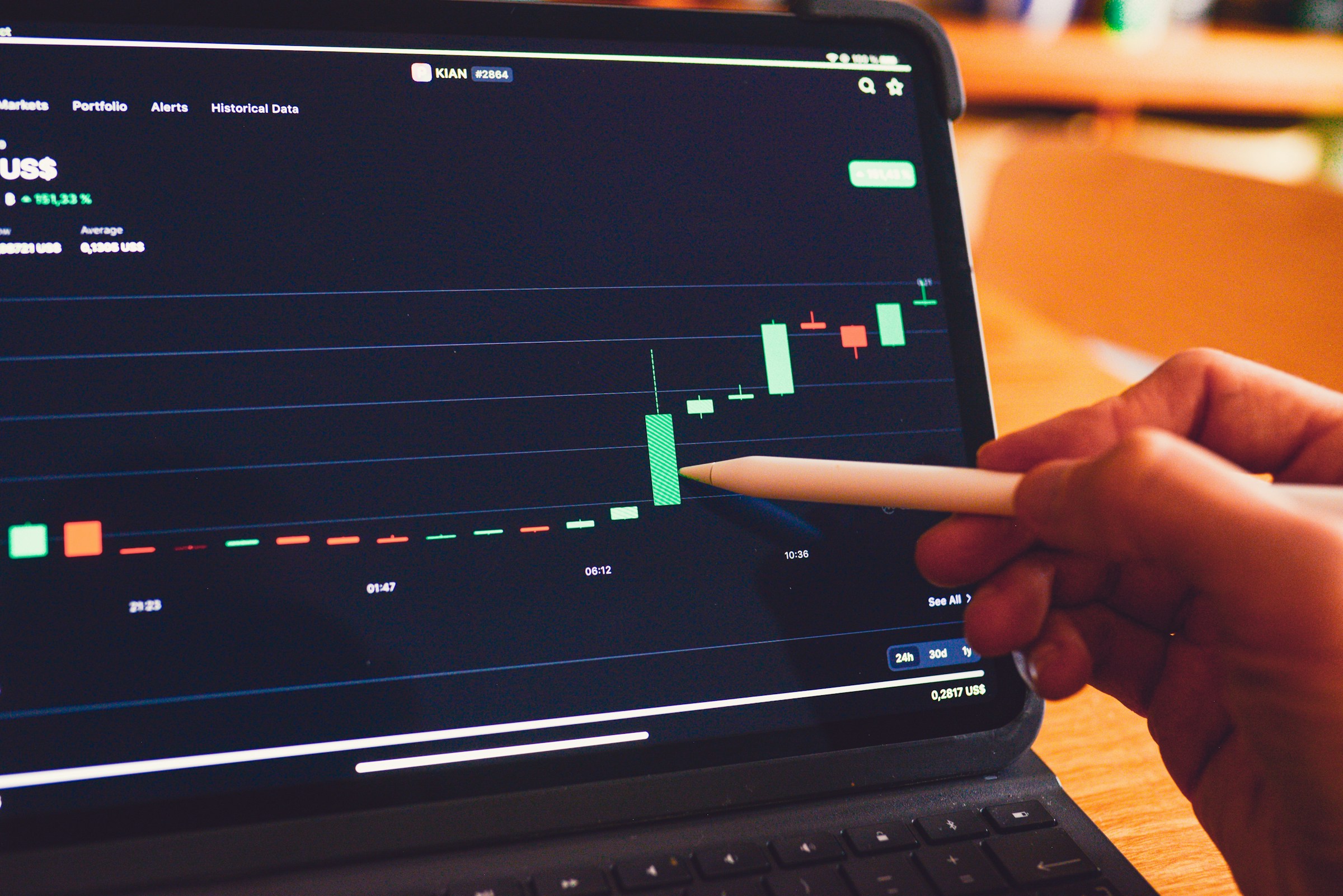September 1, 2025
.jpg)
September 1, 2025
.jpg)
You see headlines about overnight gains and ask, "What Is A Trading Bot? Can software really trade stocks or crypto for you?" Many people wonder whether algorithmic trading and AI are fundamental tools or just marketing hype. Can automated trading, machine learning models, and backtesting produce steady results? This guide cuts through the noise to reveal the real benefits and limitations, from signal accuracy and risk management to scams and practical steps for demo testing so that you can automate trades with greater confidence.
Trading Bot Experts' solution, featuring the best trading bots, reveals which platforms excel in transparency, performance, and safeguards, with clear ratings, user feedback, and straightforward steps to test and select a reliable provider.

AI trading bots are software systems that use machine learning and statistical models to spot trading opportunities and execute orders automatically. They pull large sets of historical and real-time market data, including price feeds, order book depth, and news and social media sentiment, then transform that data into signals the model can act on. Execution happens through exchange APIs with rules for order size, timing, and limits to control slippage and cost.
Traditional bots follow fixed rules that a developer programs and rarely change unless someone edits the code. AI bots learn from new data and adjust the weights within their models, allowing their decision-making process to adapt as markets change. That learning creates advantages in pattern recognition and in combining signals like momentum, volatility, and sentiment, but it also creates risks such as model drift and overfitting that require constant monitoring.
Common approaches include supervised learning for price prediction, reinforcement learning for trade policy optimization, and natural language processing for sentiment analysis. Input sources range from tick-level trade data and technical indicators to news feeds, tweets, and macroeconomic releases. The model stack often combines features from different domains, allowing the bot to weigh technical triggers against event-driven signals.
Backtesting on historical data provides a baseline, but it cannot prove future results. Walk-forward testing, cross-validation, and stress tests across different market regimes reduce the likelihood of overfitting. Paper trading with live market data validates execution behavior and reveals issues like latency, order rejection, and slippage before any real capital is at risk.
A robust bot incorporates risk management principles, including position sizing, stop-loss and take-profit rules, maximum daily drawdown limits, and forced cooldown periods after a string of losses. Add human controls, such as manual override, real-time alerts, and dashboards that display current exposures and recent trades, allowing someone to intervene when the model acts unpredictably.
Most retail and institutional bots connect via exchange API keys. Protect keys with the least privilege settings and avoid granting withdrawal permissions to the API account. Use secure servers, code reviews, and security audits to limit attack surfaces. Also, check the bot provider’s track record on uptime and how they handle software updates and incident response.
Start with paper trading or a low-capital trial, examine execution metrics such as fill rate and slippage, and request regular performance reports. Check whether the provider offers customization, manual override, and clear exit rules. Monitor model drift and be prepared to pause the bot if real-world results diverge significantly from test results.
Are you unsure which trading bot is right for you? Take our free Trading Bot Match Quiz and get a personalized recommendation based on your budget, goals, and risk tolerance in under 60 seconds, plus a free e-book with honest reviews, performance stats, and red flags to avoid so you can compare the best trading bots. Whether you are looking for hands-off profits or a high-performance AI tool, click here to take the quiz and get your free report.

Yes. AI trading bots are legitimate software tools used across various markets, including crypto, forex, and others, to automate trading decisions. They connect to exchanges through API keys, run trading algorithms or machine learning models, and place orders without human delay. Legitimacy rests on the function and integrity of the provider, not on any guarantee of profit. What makes one bot legitimate while another is a scam?
Bots execute predefined strategies, from simple rule-based systems to models that learn from data. They gather market data, generate signals, backtest strategies using historical prices, and then execute real orders according to given risk rules. Some rely on supervised machine learning to score signals, others use reinforcement learning to optimize actions. Many providers package strategy modules, signal providers, and automation into one product that you configure through the bot interface.
Automated trading eliminates emotional bias and acts continuously around the clock. Bots provide fast order placement, systematic backtesting, and the ability to optimize parameters across many markets and timeframes. For scalping, arbitrage, or round-the-clock crypto exposure, a bot can capture tiny edges that a human trader would miss.
AI does not predict the future. Models often overfit historical data and fail to perform well under new market regimes. Slippage, latency, and low liquidity can turn a backtested gain into a real loss. Leverage can multiply risk and wipe out accounts quickly. Technical problems, coding bugs, exchange outages, and hacks add additional failure modes. These are operational risks you must plan for, not just theoretical ones.
Be skeptical of promises of guaranteed returns or claims of 100 percent win rates. Watch for unverifiable track records, fake testimonials, pressure to deposit into proprietary wallets, and requests for API keys with withdraw permission. Closed-source products with no independent audit and a heavy emphasis on recruitment or referral income often indicate potential fraud. Ask for verifiable exchange statements, independent reviews, and audited code.
Expect variability and track performance using clear metrics, such as the Sharpe ratio, drawdown, win rate, and execution slippage. Update and retest models regularly, and avoid treating any bot as a set-and-forget product. Diversify strategies and position sizes to limit single-point failures. Which market and timeframe are you planning to test first?
.jpg)
Poor grammar, broken links, and a clunky site that does not resize for phones are red flags. Legitimate algorithmic trading services invest in clear copy, clean layouts, and transparent documentation for their automated trading systems and robo advisor features. Spot test pages, support chat, and legal disclosures for typos and missing pages. Can you navigate the site easily and find terms of service, privacy policy, and fee schedules?
Look for audited performance on independent services and forums. Search for Myfxbook or similar verified track records that show live performance, not just backtested results. Check Google reviews, Reddit threads, and specialized forex and crypto forums for date stamped comments and screenshots of statements. Does the bot have a long history of users reporting consistent experiences, or are reviews sparse and all glowing?
Any promise of guaranteed profits or risk free trading is a blatant warning sign. Financial markets have slippage, spread, latency, and drawdown. Real algorithmic strategies discuss worst case scenarios and max drawdown, and they explain risk management rules. When marketing promises steady wins with no losses, stop and question the model and the math behind the claim.
A credible provider describes the trading algorithm, signal logic, execution method, and risk controls. They share backtested and live results, preferably third party verified, and they explain parameter choices and sample trade logs. Ask whether the system ran on a demo only or on live accounts, and whether they publish drawdown and time stamped trades. Can you see proof that the strategy works in real market conditions and not only in optimized simulations?
Check registration and regulation status with bodies like FCA, SEC, CySEC, or local equivalents. Confirm the company address, phone number, and active customer support channels. Good platforms require KYC, disclose which broker APIs they use, and list clear terms for fees and custody. If contact details are missing or unverifiable, treat the service as high risk.
Be wary of urgency, invite-only launches, or social proof that urges immediate deposits. Scammers often delay or block withdrawals, invent KYC delays, or require funds to be held in proprietary wallets. Test the withdrawal process with a small amount and track how long it takes for transfers and chargebacks to occur. Do users report frozen accounts or repeated excuses when they try to pull funds?
Look at how the team responds to complaints and technical questions in public threads. Real operators answer substance and show consistent updates. If moderators remove negative posts or reviews that appear to be copied across platforms, question their authenticity. Are there independent voices verifying the bot, or only polished marketing and affiliates?
Check for performance fees, subscription fees, and hidden spreads or markup tied to recommended brokers. Read the user agreement for liability clauses that shift losses entirely to you. Does the pricing model reward the operator only when users profit, or does it extract fees regardless of outcome?
Open a demo or paper trading account to watch signals and execution without putting real money at risk. Ask for a live small-scale proof of concept and verify trades through broker statements or third-party trackers. Search for the company name plus 'scam', 'complaint', or 'chargeback'. Review forums for recurring technical issues, such as missed orders, incorrect fills, or excessive slippage. Will the bot work with your broker API keys without requiring full custody of funds?

Scammers use the label AI and machine learning to sell legitimacy. They publish slick pages that claim proprietary algorithms, guaranteed high returns, and low risk. In many cases, the offered bot either never trades, shows fake backtests, or uses cherry-picked results that do not reflect real market behavior. Red flags include unverifiable track records, lack of live exchange statements, promises of consistent profits with no drawdowns, and pressure to deposit funds quickly. Ask for on-chain proof, exchange account statements, or independent third-party audits before you trust any performance claim.
In crypto markets, low liquidity and anonymous participants enable bot-driven schemes to operate quickly. Scammers coordinate bots to push up price and volume, lure in followers, then sell into the spike. The result is sudden collapses that wipe out late buyers. Watch for coins that explode out of nowhere, synchronized buys from many addresses, aggressive social media hype, and listings only on fringe exchanges. The legal and ethical risks are high for anyone who knowingly participates. Would you take a position in a token whose price moves come from automated manipulation?
Many frauds charge recurring fees for access to a bot, a private channel, or trading signals. The operator earns a steady income from subscriptions, while the bot’s live performance lags or fails to perform. Sellers often hide poor live results behind selective screenshots and private groups that block external verification. Look for trials, clear refund policies, and an easy way to cancel recurring billing. Test any paid service on a demo account or with a small live amount first to confirm actual automated trading results. Do you have a refund route and an exit plan before you subscribe?
Scammers ask for API keys or private keys and then drain accounts. Some request full permissions, others trick users with fake setup steps that capture seed phrases. Understand API permission levels: read only, trade, and withdraw. Never grant withdraw permissions to a third party. Use exchange subaccounts whenever possible, lock API keys by IP address, and revoke keys after testing. Prefer custodial arrangements with limits and audits over handing over private keys. Have you checked which permissions you actually granted, and can you cancel them instantly?
Which records prove live performance, not simulated backtests? Does the operator allow independent verification on a broker or exchange? Can you view trade IDs, timestamps, and account statements instead of screenshots? Is the strategy understandable or a black box claim? Does the provider show realistic drawdowns and explain risk management? Insist on clear answers and concrete proof before you deposit meaningful capital.
.jpg)
Create API keys with the smallest set of permissions required for the bot to run. Allow trading but disable withdrawals and avoid giving margin or transfer rights unless you clearly need them. Use IP whitelisting when the exchange supports it, rotate keys regularly, and revoke keys immediately if the bot behaves oddly. How do you check permissions? Review the exchange settings and the bot documentation before you grant any access.
Open a separate exchange account or sub account for automated trading. Fund it with a modest amount you can afford to lose and run the bot on testnet or paper trading first to confirm strategy and execution. Keep your main portfolio offline or in cold storage while you validate bot performance and backtesting results. What happens if the bot fails? Your losses stay contained to the dedicated account.
Use a password manager to generate unique, strong passwords for each exchange, bot dashboard, and email account tied to trading. Enable two factor authentication, preferably app based or hardware key 2FA, and avoid SMS where possible. Turn on account email alerts and check audit logs for suspicious logins or API activity. Using tools like NordVPN’s Threat Protection Pro™ can further shield you by detecting and blocking access to malicious websites that may try to steal credentials.
Be skeptical when a bot vendor asks for large upfront sums or recurring high subscriptions without verified performance data. Legitimate algorithmic trading services usually offer free demos, transparent track records, and third party audits or verifiable backtesting. Ask for precise performance metrics, live trade logs, and risk adjusted returns rather than glossy marketing claims. If a provider pressures you to deposit now, treat that as a red flag and step back.
Referral and multi level marketing structures can inflate social proof and create pressure to recruit. Some of these systems are legitimate marketing efforts, but others use new investor funds to compensate earlier users, which mirrors classic pyramid schemes. Inspect cash flows, examine whether returns come from trading profits or from new signups, and verify proofs of reserve or independent audits if available. Who benefits most from the scheme should guide your skepticism.
Follow credible crypto news sites, security forums, and exchange advisories to track new scam tactics and emerging threats to trading automation. Evaluate user reviews for specific details like connection failures, unexplained orders, or missing trade logs rather than star ratings alone. Test strategies that utilize backtesting and small live runs require transparency from signal providers, verifying whether vendors comply with local regulations and hold the necessary licenses. How will you verify a bot next time you see it advertised? Take due diligence steps before handing over access.
Which trading bot fits your budget, goals, and risk tolerance? Take our free Trading Bot Match Quiz and get a personalized recommendation in under 60 seconds. We send a free ebook with honest reviews, performance stats, and red flags to avoid in the trading bot world. Whether you want hands-off profits or a high-performance AI tool, this guide helps you choose the smartest option. Click here to take the quiz and get your free report.
What is your time horizon, risk tolerance, and technical comfort level? Do you want set-and-forget automation or a tool you tune daily? Use our Trading Bot Match Quiz to answer these in under 60 seconds and get a tailored recommendation plus a free ebook that lists trustworthy vendors and warning signs. Click here to take the quiz and get your free report.